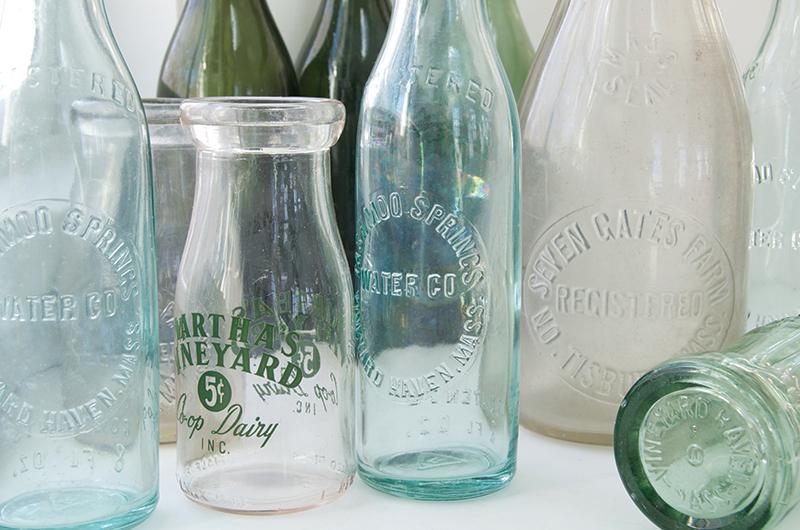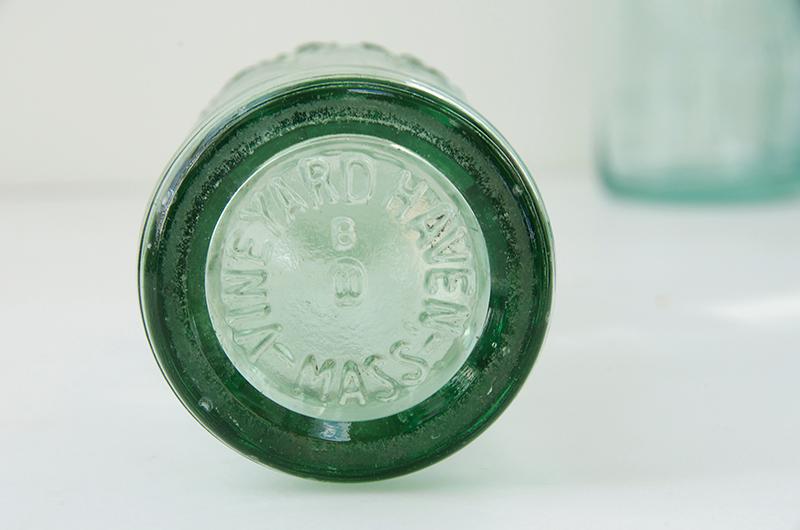If you don’t bring eccentricities with you when you come to live year-round on the Island, you’re bound to pick some up along the way.
One spring day while I was shingling a house out on the south shore, a dump truck rambled up with a load of topsoil. I looked over, waved to the driver, and watched as the dirt spilled out. I noticed some glinting flashes. My heart started beating harder as I speculated about the cause of the shiny pieces of glass of varying colors littered through the load.
“Hey, yo! Where’d that load come from?” I shouted to the driver. “Over there, on the other side of the property,” he replied. I felt it prudent to hide my growing excitement, so I said only, “Cool, looks like some nice dirt.” “Yeah, it’s dirt,” he said as he headed back to get another load. I carried on with the shingling, but my mind was already wandering to where the dirt had come from. Those bits of glass in a load of topsoil meant one thing: it wasn’t just dirt, it was pay dirt. There was a bottle dump nearby.

Before refuse districts and recycling, rural folk on the Vineyard disposed of their trash on their own properties, often filling in a single area over several generations. With none of today’s ubiquitous plastic in the mix, in time the paper and organic material composted into soil, leaving only the bottles and occasional scrap metal. Leaving, in other words, a treasure trove for those like me, who are afflicted with an incurable eccentricity known as bottle-hounding.
When I knew no one was around, I left the shingling and, as if possessed, wandered toward where I sensed the bottles would be. That’s how it works when you get connected – you see. I have become a bottle dump dowser, a redeemer of refuse, and as I drifted through the woods I let myself relax into hunter mode. I slowly approached the quarry, lest the bottles escape my gaze. Then suddenly, there they were. I had hit the mother lode. Every twenty feet or so there was another pile. The mounds were laid out in a grid pattern covering more than an acre. This was the dumping ground of a fastidious farmer who had started far away from the house. As the years went by, the piles came closer and closer to the dwelling. I could tell this was the case because the piles farther away were clearly the older specimens.
There were blown glass bottles, old ceramic gin bottles, and piles of torpedo-shaped bottles that were designed to stay on their side to keep corks wet. There were Mullins fruit jars made in Boston, Sterling’s Ambrosia for the Hair bottles, and no shortage of Warner’s Safe Kidney & Liver Cure. I was in heaven near enough.
Bottle hunting is not the only eccentricity that I have acquired on Martha’s Vineyard. The first weekend I arrived, I became a tall ship sea cook. It started with the Shenandoah and the Ernestina. Years later, in the pinnacle of my sea-cooking career, I became chief cook on the three-masted barque Picton Castle’s fourth circumnavigation of the globe. It was with great pride that I took that position, a representative of present-day Vineyard sailors connected to those who had boarded whaling ships for years at a time.

One place we visited was Pitcairn Island, one of the most remote locations on the planet. When we approached the island, Captain Moreland came to me and said we’d be there for ten days, and that he wanted me on the first boat ashore and on the last boat back. This was his way of giving me a break after feeding the crew of fifty for forty days straight, breakfast, lunch and dinner, since leaving Nova Scotia. We were about a third of the way across the Pacific and in a zone that had often been visited by Vineyard whalers.
On a Sunday I decided to take a look around the tiny island, perhaps see some of the haunts of the famed mutineer Fletcher Christian. I found a small open patch tucked away in the tropical flora, and as I settled down to a well-deserved nap I noticed something glinting in the underbrush. Excitement building, I went over to take a closer look. A little prodding and a bit of digging unearthed . . . a Mullins fruit jar made in Boston. It was an exact copy of one I had found on the Vineyard. I thought to myself, there must be a bottle of Warner’s Safe Kidney & Liver Cure nearby.
The hunt was on.





